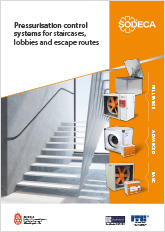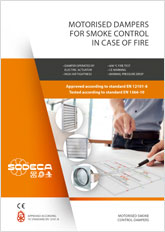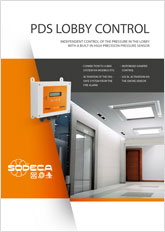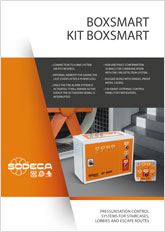Pressurisation control systems for staircases, lobbies and evacuation routes
Pressurisation solutions for evacuation routes in the event of a fire
More than 80% of fire victims are due to smoke inhalation. Pressurisation systems are the most reliable solution to prevent smoke from entering evacuation routes.
The BOXPDS pressurisation systems, certified in accordance with standard EN 12101-6:2022, secure evacuation routes by preventing smoke entry through air overpressure. In the event of doors opening or air leakage, the system responds by increasing the airflow, ensuring that these routes remain clear of smoke during an emergency. Evacuation routes include corridors, staircases, lifts, and lobbies.
Applications
SODECA pressurisation solutions offers different types of equipment to satisfy all installation needs.
To select the most suitable equipment, it is important to have previously defined how the outside air is going to be suctioned and supplied to the pressurised area and follow the recommendations provided below:
Intake of outside air
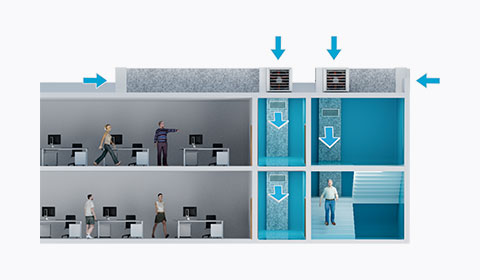
Joint pressurisation of all lobbies
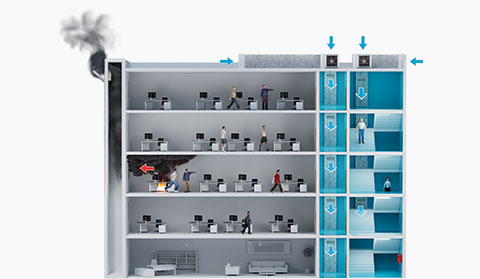
Individual pressurisation of lobbies
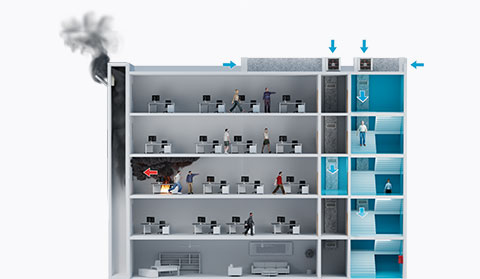
High-rise buildings
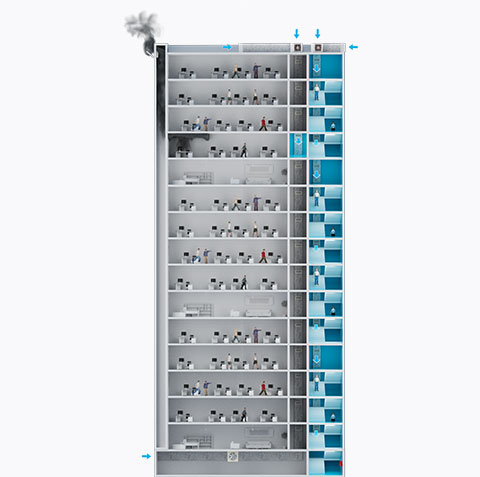
Pressurisation air exhaust
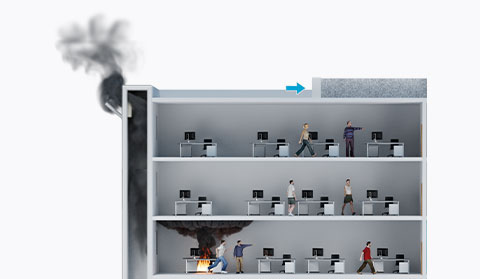
Tunnel evacuation galleries
Tunnel safety depends, to a large extent, on evacuation routes, which must be designed according to the specific construction characteristics of each tunnel. The pressurisation systems of evacuation galleries in tunnels have specific requirements that differ according to the configuration of each tunnel.
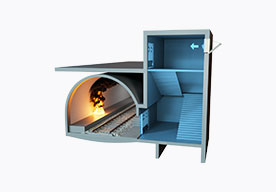 Evacuation staircases in railway or highway tunnels
Evacuation staircases in railway or highway tunnels
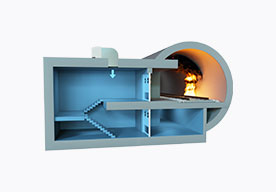 Auxiliary evacuation galleries in railway or highway tunnels
Auxiliary evacuation galleries in railway or highway tunnels
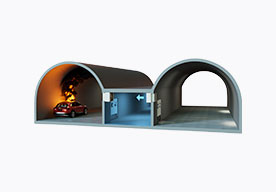 Interconnecting galleries of dual-tube tunnels
Interconnecting galleries of dual-tube tunnels



















